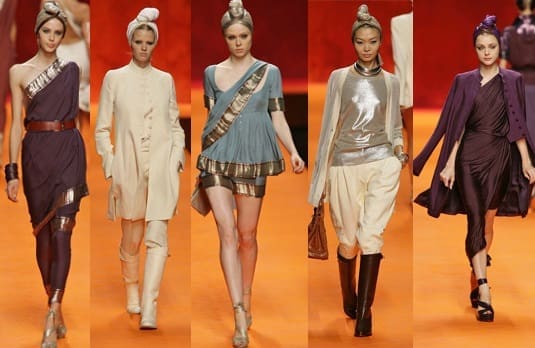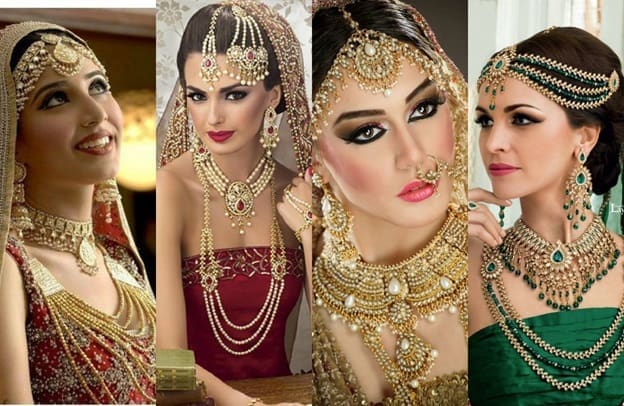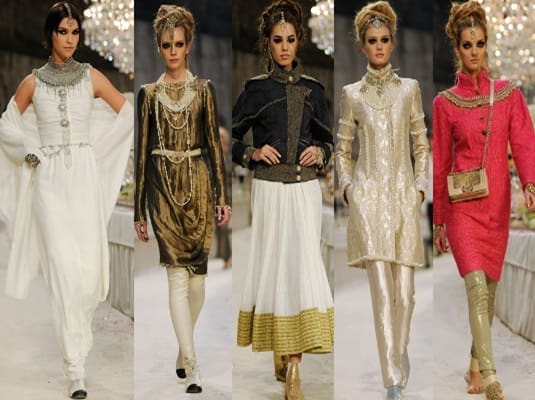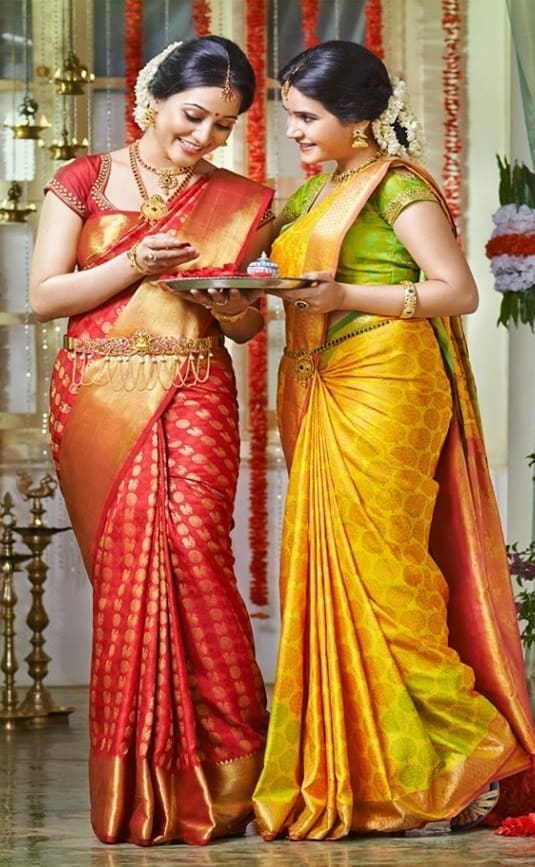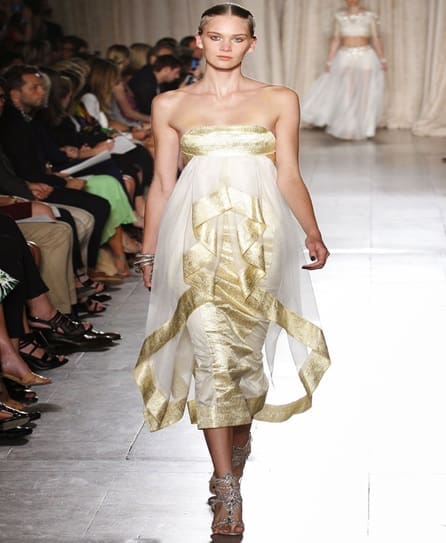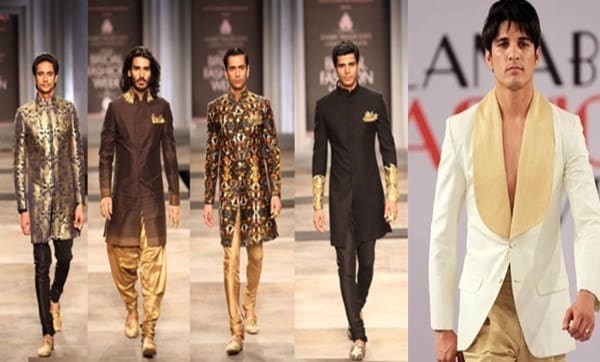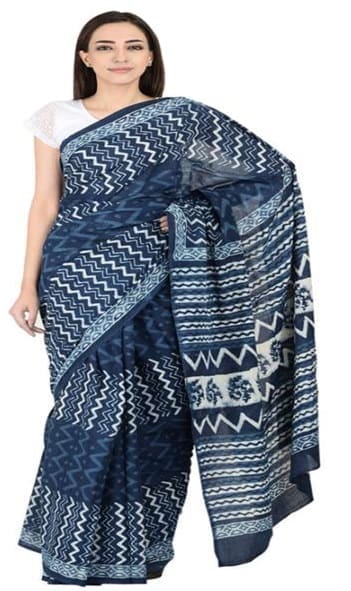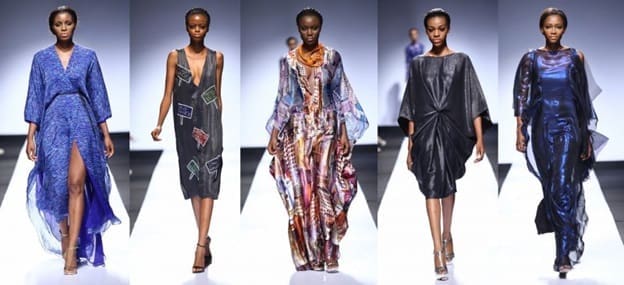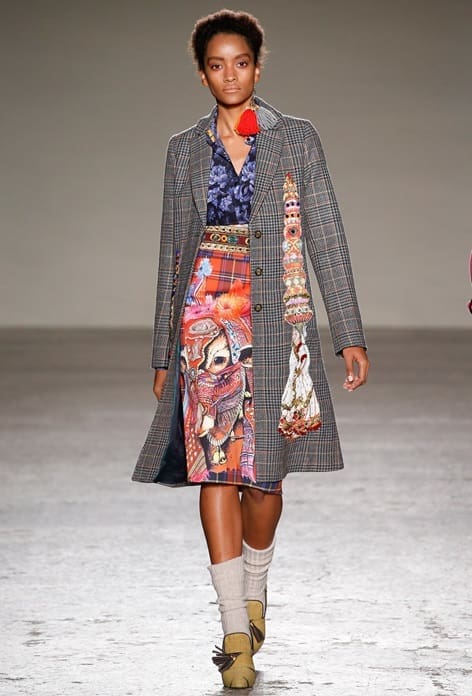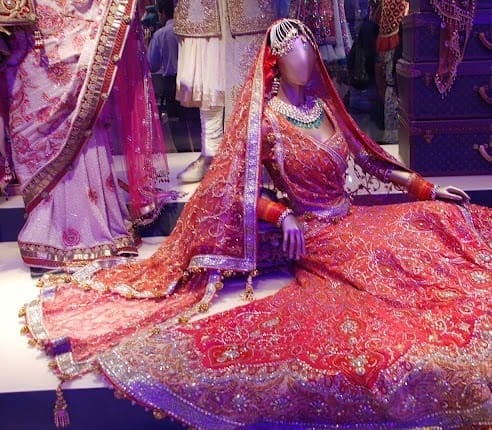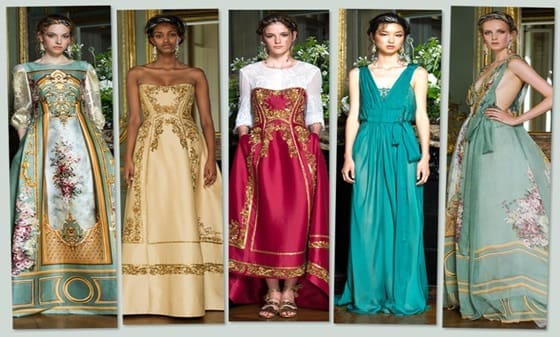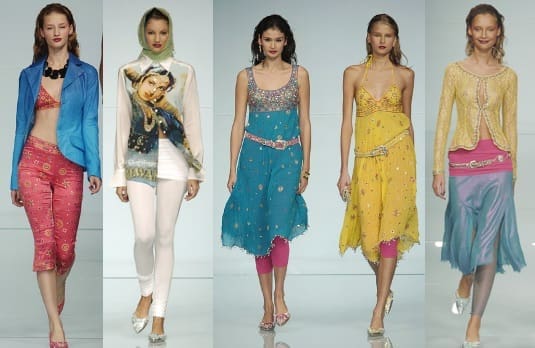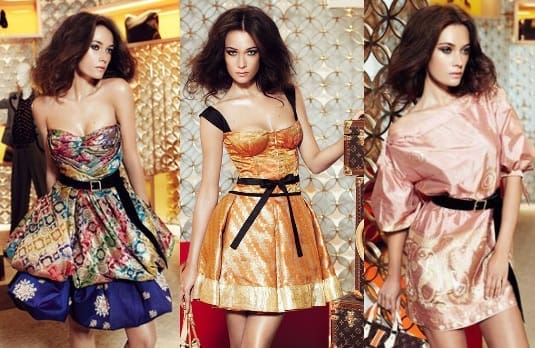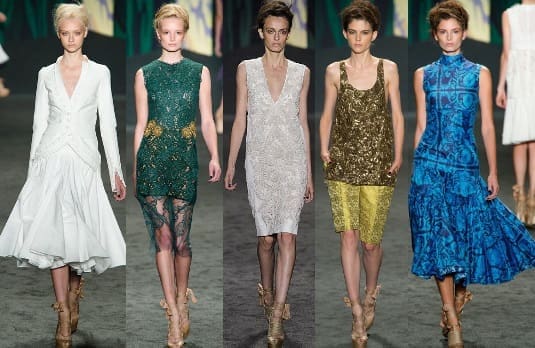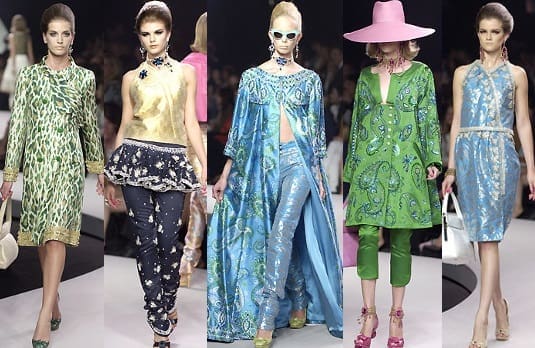D.K.T.E’S TEXTILE AND ENGINEERING INSTITUTE, ICHALKARANJI
Abstract:
India has given the world yoga, architecture, heritage, traditions. One more contribution that must be added to the list is fashion. India has long been a muse to the international fashion. The sheer amount of diversity and influences that designers can draw from every region is immense, and no other country can come close to it. 1With the world communities coming closer, the influence of Indian culture and heritage on international fashion is only growing. Indian fashion designers have contributed a lot in the international fashion arena with their incomparable weaves, embroideries, fabrics and designs by bringing together their vast expertise, creativity and innovation. In this paper attempt has been made to discuss the application of Indian traditional accessories, draping styles, to create western silhouettes. The headgears used in ancient India footwear’s like jutties and mojdi Indian maangtika and various embellishment used in bridal jewelries are kept as an inspiration by international designers to make a fusion in the fashion world.
Keywords: turban, maangtika, jutti, indigo print, zardosi work, sari
Introduction: India has given the world yoga, architecture, heritage, traditions. One more contribution that must be added to the list is fashion. India has long been a muse to the international fashion. The sheer amount of diversity and influences that designers can draw from every region is immense, and no other country can come close to it. 1 with the world communities coming closer, the influence of Indian culture and heritage on international fashion is only growing, it seems.2 India is ubiquitous- be it architecture, tradition, culture or art. Fashion industry is no exception. We have been unique and have been inspiring the world by setting trends all across. Indian fashion industry, however at a growing stage, has left no stone unturned in setting fashion statements on the world stage. 3 Indian fashion designers have contributed a lot in the international fashion arena with their incomparable weaves, embroideries, fabrics and designs by bringing together their vast expertise, creativity and innovation. The most fashionable and modish celebrities have pulled off the Indian look brilliantly.3 Apart from highlighting fashion in terms of apparels, even the art of inking on body (known as tattoos now) was born in our country and then travelled West.3 Meanwhile International runways are putting forth collections inspired by Indian opulence. It is interesting to see a perspective of Indian inspired fashion, through the famed creativity of world renowned international fashion designers.5 India, with her rich and colorful heritage in terms of textiles, weaves, culture has served as inspiration to international designers for decades.6.Apart from traditional fashion collections where India may be listed as one of the designer’s official influences that season, there are other ways people are turning to India. One great example of this is Spring/Summer 2015 campaign of the new American brand Trademark. The only Indian connection is the location of the shoot that was used to create an essence for the brand. Shot brilliantly by Jamie Hawkes worth to look like the holiday photographs of a traveler, the images capture the mood of the so-called ‘real India’.6 Technology, too, needs to be updated. “The textile market has changed, so technology has to change. Designs have to be created for the western market,” says Nambeth.7 This is where the mass orders come for the Indian garment industry, as they did for the ghagra skirts, which started out as a high fashion statement.7 India has one more reason to be happy. The more the country is featured on international catwalks, the greater the demand for its fabrics and embroidery. And for Indian garment manufacturers and craftsmen, a bigger slice of the multi-billion dollar international fashion industry. 7
Headgear:
A dastaar or pagari or pagg is an item of headgear associated with Sikhism/sikh religion in Punjab,India. The dastaar is asymbol of spirituality and holiness in sikh religion. Also symbol of honour and self respect. In Punjab sikh community wear a dastaar, partly to cover their long hair, which is never cut, as per the wish of their last human guru, Guru Govind Singh. Different styles of dastaars are men’s double nok, chand Tora, Amritsar Dhamala, Basic Dhamala, Patka, patiyala shahi turban and morni pagg. The turban is tied in several styles, some of which are indicative of the place a man hails from his social position or cultural background. The turban is wound round the head several times first obliquely on one side and then reversely on the other in such a manner that the two parts diagonally intersect each other at the center of forehead. The remaining end of the turban is either free at the nape of neck or allowed to hang longer and loosely over the back or neatly tucked into the folds. 8 Indian Prime Minister Narendra Modi, in fact, has emerged as sort of a style icon and the best representative of this fabulous headgear as he has sported a lot of colorful pagdis on various occasions.
The sheer amount of headgear that Indians wear is amazing and has drawn inspiration from many designers. Popular designers have experimented with turbans. For its fall 2018 collection at the Milan Fashion Week, Gucci introduced models on the ramp wearing various headgear accessories, out of which turban was one. While this was a big Indian influence, many criticized Gucci on the social media for cultural appropriation on a global scale as turbans have a religious significance for Sikhs. Pagdis or Safas worn by Indians on a daily basis or during festive occasions are also popular.Chanel’s Paris-Bombay collection – Pre-fall 2012 saw male models walking on the ramp in a wrapped headgear, which was clearly the pagdi or safa style. In contrast to the turbans, pagdis are a more acceptable trend globally; Rajasthani pagdis are a clear example. Various Japanese drivers have been seen sporting Rajasthani turbans, and the same has been featured in quite a few international fashion events. In Couture Fall 2007, the designer’s couture collection evoked the Princes and the Maharajahs. The Jodhpurs, turbans and blingy achkans ruled the ramps alongside the Princes of the colonial era. While the Indian fashion shows are all about exquisite bridal outfits, it is interesting to see an exaggeration of Indian male outfits on female forms in the West. Jean Paul Gaultier’s presentation of Indian inspired fashion seeped with ostentation.5 In Hermes spring summer- 2008, Jean Paul Gaultier’s ready to wear collection was a tribute to India. The Indian inspired fashion collection started off with androgynous outfits that were inspired by quintessentially male Indian attires like the Jodhpur pants, Nehru jackets and bandgalas. The outfits transitioned to more feminine fluid outfits like tunics, saree inspired drapes and gowns. The turban twisted headgears further enhanced the Indian feel.
Nose Rings :
Nostril piercing is a body piercing practice for the purpose of wearing jewelry, much like nose piercing, which is most primarily and prominently associated with Indian culture and fashion since classical times, and found commonly in India.9 Nose piercing is the tradition of India. In India all women’s are worn nose ring on the left or right nostril. According to Ayurveda, piercing the nose near a particular node on nostril helps in lessening the pain during childbirth. Nose pins normally used while wedding ceremonies. Nose piercing didn’t originate in India, it was brought to the country in the 16th Century from the Middle East by the Moghul emperors. In India a stud called Phul or a ring known as Nath is usually worn in the left nostril, it’s sometimes joined to the ear by a chain, and in some places both nostrils are pierced.
Though nose rings have been popular in other parts of the world, nowhere is the item worn on a daily basis than India. It has globally inspired many variants. Notably, the nath version has become popular. During the Jean Paul Gaultier Haute Couture Fall/Winter 2017-2018 show in Paris, models were seen wearing stylized versions of the nath, which were popular during the times of maharajas. Indian brides still wear nath as an essential jewelry item for their big day.
Maangtikka/Jewelry:
In India, bridal jewelry has a deep rooted significance. The maangtikka is a typically Indian hair ornament, placed on the bride’s hairline with a drop pendant that gracefully sits on her forehead. The bindi represented by charka signifying the holy union of male and female on a spiritual and emotional level. Today women not only in India, but across the world wear the maang tikka as a fashion statement, with traditional Indian attire and sometimes even with western wear! This gorgeous Indian hair accessory, has captured the imagination of the fashion world, and has become an extremely coveted wardrobe essential.
This third eye of fashion has extended its reach overseas and is considered as a casual fashion accessory in the west. Various models have flaunted bindis on the runways. One of the most notable moment for bindi came during the Chanel Paris Bombay fashion show of 2012 when Karl Lagerfeld sent his models wearing a bindi and maangtikka on their foreheads. Mc. Queen was inspired by Indian royal costumes and jewelry for this collection.Katy Perry, Selena Gomez, Gwen Stefani, Beyonce have all famously worn bindis in music videos and award functions. Karl Lagerfeld brought Coco Chanel’s Indian vision of outfits from the fifties and sixties to the runway of Paris for the autumn winter 2012-13 collection. In Chanel Bombay Paris Collection 2012-13, the models walked the runway, which was set between tables spread out for high tea, and they were be jeweled with stranded necklaces and head pieces. The Indian inspired fashion from Chanel embraced the concept of easy to wear making use of skirts, tunics, jackets, leggings and pants against the flowy Indian saris.
Saris:
In India sari is considered to be among the oldest form of garment in the world still in existence.12 it drape varying from to nine yards (4.5meters to 8 meters) in length and two to four feet (60cm to 1.20meter) in breadth that is typically wrapped around the waist, with one end draped over the shoulder, baring the midriff. In sari, various draping styles are seen in India according to states.
Saris are still identified as the quintessential Indian garment. Over the years, it has become a huge fashion influence. Part of it is due to the popularity of Bollywood movies abroad that depict colorful, decked-up garments which have caught the fancy of people. Also, the influx of foreign tourists to India have contributed to the trend as many women, and international celebrities are seen wearing saris on many occasions. Off late, various Indian and international designers have experimented with the garment to make it more adaptable to the international taste. American-Nepalese designer Prabal Gurung recently showcased his autumn/winter 2018 collection at New York Fashion Week where Gigi Hadid modeled a patterned scarf over a wrap skirt. The scarf was draped across her torso and neck, leaving one fringed tail hanging over her shoulder; this was a subtle nod to the sari. For Marches spring summer-13 Georgina Chapman and Karen Craig’s represented Indian brocade work . this collection was a glorious embodiment of Indian art and craft with a tinge of glamour. Sari gowns have also popularized the garment abroad. John Galliano showcased sari-inspired costumes for his Spring 2003 collection while Marchesa’s Spring/Summer 2013 show paraded dresses complete with Chantilly lace, one-shoulder drapes, beadwork and bare midriffs.
Indian Juttis:
‘Jutti’ is an Urdu word for a shoe with a closed upper attached to a sole. Jutti or nagara was first patronized by the Mughals and were extremely popular amongst the kings and the queens who belonged to the richest era of Indian history. The upper part of shoe made of leather or textile, embellished with cowries, mirrors, brass nails, bells, ceramic beads and other ornaments.
Vibrant colors and artistic embroideries are making a splash the world over, but one piece that has caught the fancy of western fashion is the quintessential subcontinent jutti (we say subcontinent because juttis are not dominant only in India but Pakistan as well). While Indian versions are replete with traditional patterns, motifs, and embroideries, it has been restyled to suit western tastes in fabrics such as denim, lace. Sticker-work and hand paints are common, too.
Indigo Prints:
Indigo is among the oldest dyes to be used for textile dyeing and printing .Indigo was also cultivated in India, which was also the earliest major center for its production and processing. India was a primary supplier of indigo to Europe as early as the Greco- Roman era.
Indigo prints are essentially Indian with traditional patterns of nature or mandala designs. They are ideal for India’s harsh summers. Western designers have taken the prints and styled it in their mini, midi, and maxi dresses to make it contemporary for western women.
Indian Folk Prints:
The folk and tribal arts of India speak volumes about the country’s rich heritage. Art forms in India have been exquisite and explicit. Some popular folk art forms include Madhubani paintings from Bihar, Kangra paintings from Himachal Pradesh, Tanjore painting from south India and Warli paintings from Maharashtra.
When we talk of influences, it’s difficult not to speak about our folk prints. These are hugely popular abroad, and there have been many variations in the designs to suit the western palette. Chanderi, Madhubani, Block and other popular prints have been fused with bright hues and big Indian prints to create unique outfits. The big floral Pheran prints from Kashmir and abstract contemporary designs are also quite popular. For winter fall- 2015 ,Stella Jean presented a colourful collection that had motifs inspired from Himalayas and the ritual of decorating the holy yak. fall 2015
Embroidery:
In India, various embroidery styles that vary by region and clothing style. The most opulent form of Indian embroidery is the zari and the zardozi, known since the late 16th century, brought in India by the mighty Moghuls. This form uses metallic thread. Once real gold and silver thread was used on silk, brocade and velvet fabric and embellished with pearls, precious stones, gota and kinari etc.
Indian embroidered prints have become extremely popular with brands like Gucci, which showcase them on coats, dresses. International fashion houses like Christian Dior, Alberta Ferretti often source their embroidery design patterns from India. The delicate thread, lace, stone, embroidery works are also frequently found on stilettos (Christian Louboutin’s Spring 2012), clutches, and bags. The Bollywood digital prints, mirror embellishments, vibrant combinations and disco pants could be traced to Indian movies of the 70’s and 80’s. The Indian inspired fashion celebrated kitsch in all its glory in the 2005 Milan fashion show.
Fabrics and Bright Colors:
In Louis Vuitton Diwali Collection 2010, to celebrate its special Indian connection from the times when Indian Maharajahs used to order trunks and luggage from the luxury brand, Louis Vuitton came out with an Indian inspired collection. This unique collection was launched during the Hindu Festival, Diwali in 2010 in its stores, across the world.
The setup for the store display window was conceived in India in collaboration with Rajeev Sethi, the Indian artist working towards modernization of Indian arts. The Indian inspired fashion collection revamped vintage saris, sourced from cities like Mumbai, Delhi, Chennai and Bangalore. The saris were transformed into contemporary skirts, dresses and shorts designed by the ace designer, Marc Jacobs.
Louis Vuitton also created custom fabrics in cotton and silk that year, with the assistance of traditional Indian craftsmen who weaved the label’s famed hologram onto the Indian fabrics.
Vera Wang’s spring 2013 collection titled Out of India was an ode to Indian texture and fabrics. Her Indian inspired fashion thoughtfully presented the fabric dimensions on the global stage of New York. The contemporary minimalism of Vera Wang adopted the Indian feel in her signature style. The designer stayed away from predominantly Indian silhouettes and used laced layers, fitted jackets and flares in skirts. For untrained eyes it would be difficult to spot the Indian connection but the designer unabashedly proclaimed the source of her inspiration. The color palette that moved from white to brighter tones also reverberated the spirit of India.
In Christian Dior Resort 2008John Galliano’s Indian inspired fashion was a resort line which exemplified nuances like bright tones, blingy borders, paisley prints and Indian brocade type fabrics.
The international label stores are also performing well in the Emporio Mall of New Delhi and other locations in Indian metropolises. This has led to elaborate plans from the international designers to channel the new-age Indian’s fashion craze. Furthermore the Indian inspired fashion creations with contemporary ideologies appeal to the sensibilities of a global Indian.
The Western connoisseurs of fashion always felt a pull towards Indian attires but the wearability factor hindered the acceptance. The recent adaptable trends introduced by the modern Indian fashion designers have opened up the possibility of an Indian outfit. These modern outfits are also influencing the International designers in a big way. The reasons may be myriad but the fact that cannot be ignored is that Indian inspired fashion is getting its due recognition and maybe it’s just the beginning!
References:
- https://fashinscoop.com/935-2/ ,Image source- www.vogue.com,www.livingly.com
- https://www.hindustantimes.com/fashion-and-trends/sikh-turban-on-gucci-runway-indian-culture-influences-international-fashion-again/story-HxZIrMyLFQjJA8bEE4Z9UO.html
- https://design.careers360.com/articles/what-has-india-contributed-international-fashion
- https://www.nydailynews.com/life-style/india-influencing-u-s-culture-top-designers-disney-article-1.300444
- https://strandofsilk.com/indian-fashion-blog/stylish-thoughts/indian-inspired-fashion-goes-international
- https://www.vervemagazine.in/fashion-and-beauty/10-best-india-inspired-collections-of-the-last-decade
- https://www.vervemagazine.in/fashion-and-beauty/10-best-india-inspired-collections-of-the-last-decade
- https://en.wikipedia.org/wiki/Dastar
- (Stirn 2003)
- https://www.indiamarks.com/nose-rings-not-just-a-fashion-statement-in-india/
- https://www.karatcraft.com/blog/significance-maang-tikka-indian-traditions/
- Lynton, Linda (1995). The Sari. New York: Harry N. Abrams, Incorporated. ISBN 0-8109-4461-8.
- Boulanger, Chantal (1997). Saris: An Illustrated Guide to the Indian Art of Draping. New York: Shakti Press International. p. 6.
- Alkazi, Roshan (1983) “Ancient Indian costume”, Art Heritage
- Boulanger, Chantal; (1997) Saris: An Illustrated Guide to the Indian Art of Draping, Shakti Press International, New York.
- “Jutti sandals & shoes: buy them here – by Chappals.co.uk”. chappals.co.uk. Retrieved 20 April 2018
- https://en.wikipedia.org/wiki/Indigo_dye
- https://knowindia.gov.in/culture-and-heritage/folk-and-tribal-art.php
- Ms. Dhamija, Jaslean (2013) Asian Embroidery



